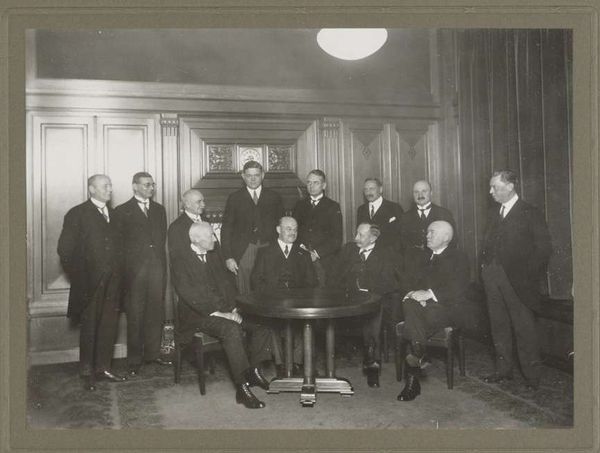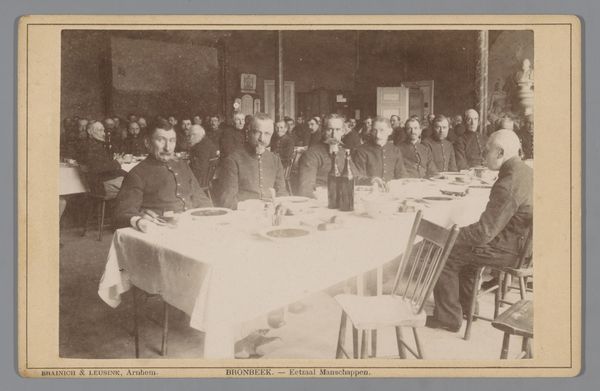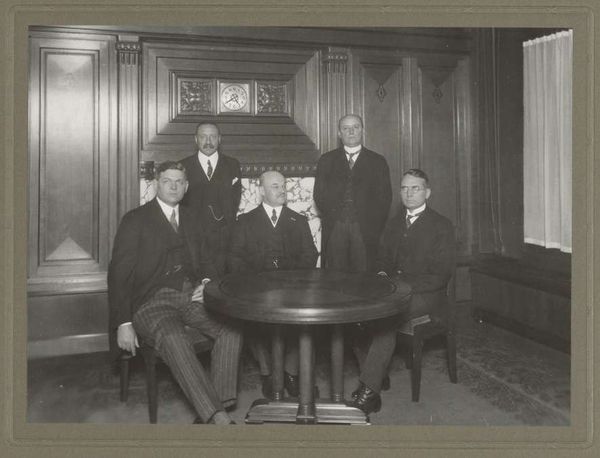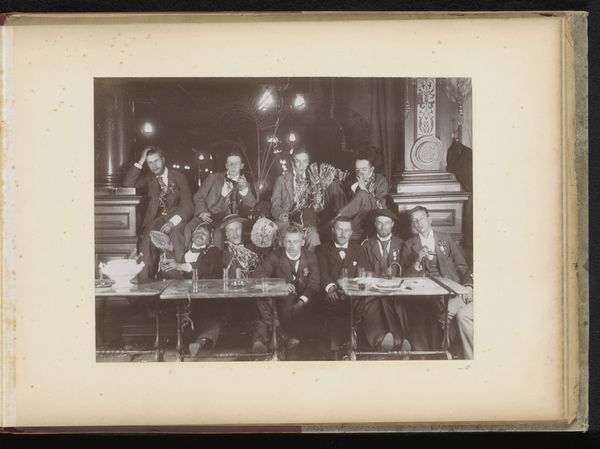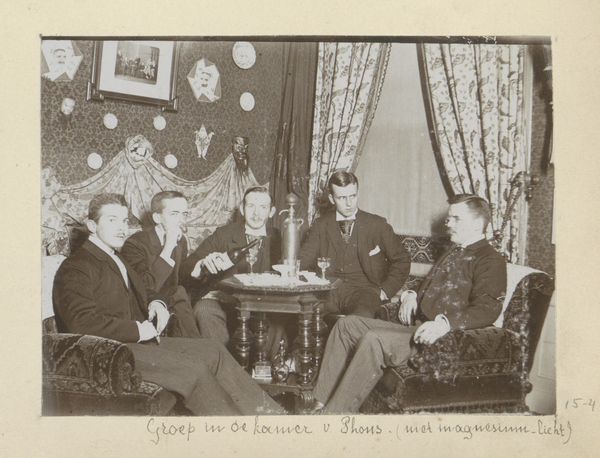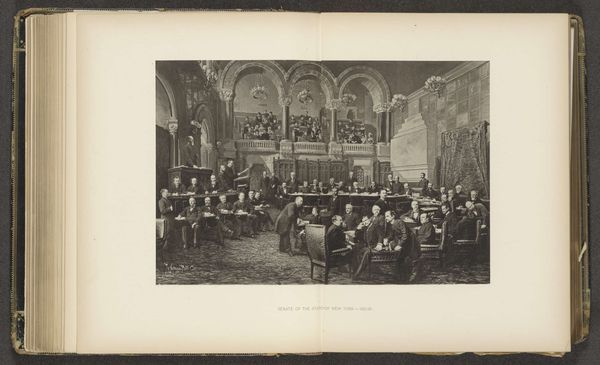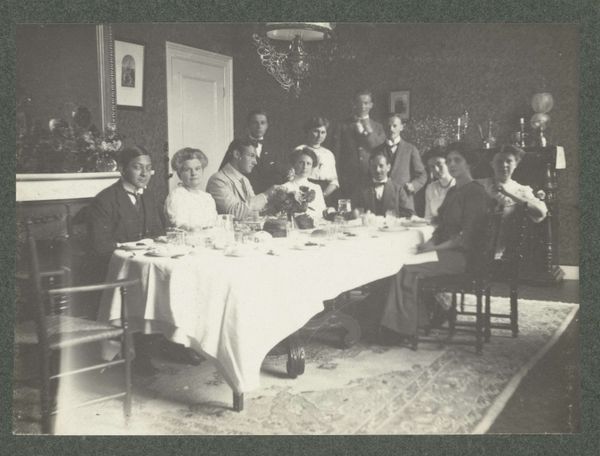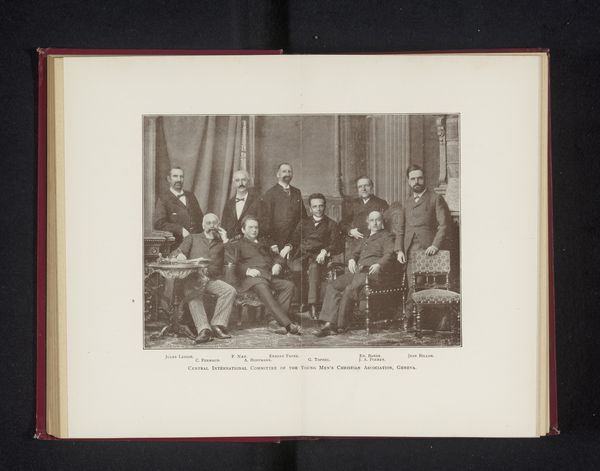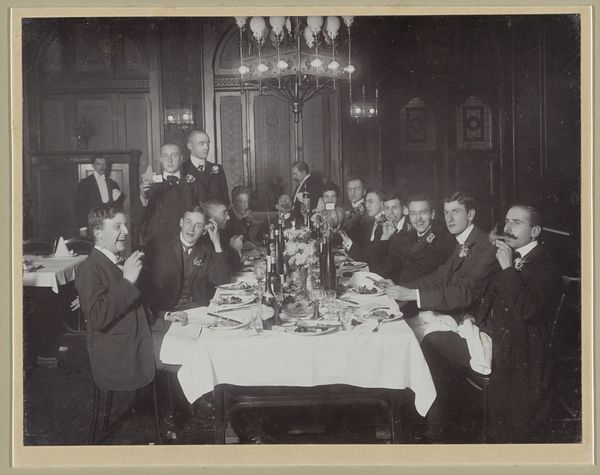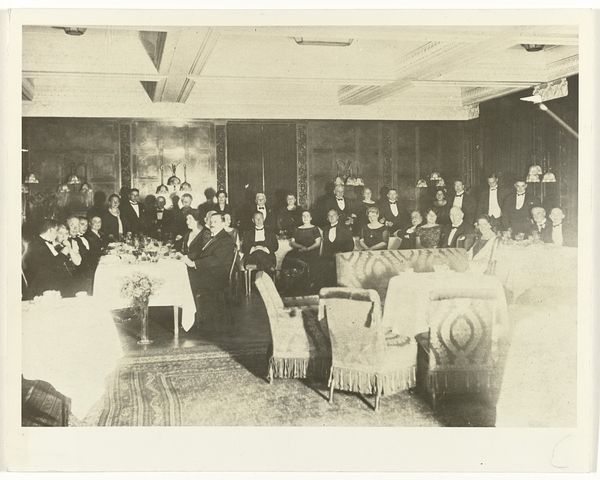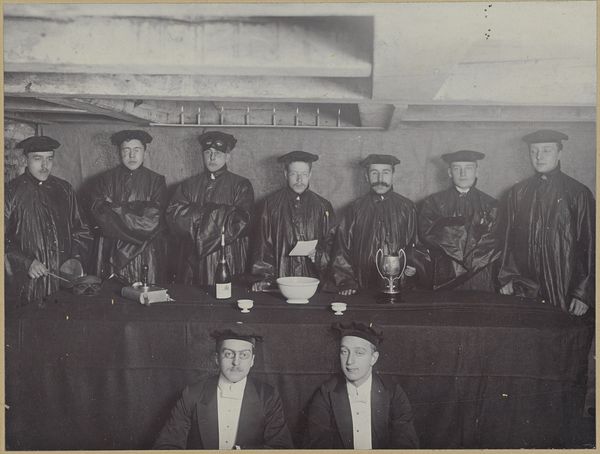
photography
#
portrait
#
photography
#
historical photography
#
historical fashion
#
19th century
#
genre-painting
#
history-painting
Dimensions: height 165 mm, width 222 mm, height 241 mm, width 307 mm
Copyright: Rijks Museum: Open Domain
Curator: This intriguing historical photograph, simply titled "College van Burgemeester en Wethouders van Rotterdam," captures a formal gathering. It's estimated to date from between 1880 and 1920, and the photographer is J.H. Wolf. Editor: My first thought? Authority. Look at the formality, the gravitas. There's a weightiness conveyed not only by the serious expressions, but also by the sheer mass of dark wood and fabric in the room. Curator: Precisely. Let's consider the materiality of this image. Photography in this era was a laborious process. The large-format cameras, the glass plate negatives... Each print required skill and time. The sepia tones, the texture of the paper itself—these were not throwaway images, but carefully considered objects produced for a specific purpose. They were material manifestations of power. Editor: And look at the composition—the deliberate arrangement of figures around that massive table. The table itself is laden with papers and what appear to be official documents. The circular shape is no accident; it suggests unity and shared decision-making. Then observe the imposing mirror on the back wall which appears to double the perception of items on the table creating more emphasis on decision and authority. The image becomes almost archetypal, doesn’t it? Curator: The sartorial details are telling. These men are impeccably dressed in dark suits, the uniform of civic duty. Each detail, from their meticulously groomed facial hair to their starched collars, speak to the values of the age: order, decorum, and the visible display of social standing. The consumption involved in the production of those clothes marks their societal status in the Rotterdam society. Editor: Those suits act almost like shields, uniforming them, yes, but also hiding the individuals beneath. The severe backdrop also conveys stability but lacks any personal details that humanize them. Curator: It does feel as though the symbolism intentionally outweighs personality. This photograph is an artifact of a particular historical moment, offering a glimpse into the material culture of governance. Editor: Agreed. This image, beyond simply portraying a group of men in a room, encapsulates a cultural narrative, almost a staged ritual of authority and collaboration from a bygone era. A powerful statement in visual terms. Curator: Indeed. By understanding the materiality and manufacture of the photographic print, we can perceive it as something far greater than merely a photograph: it stands as a testament to social and power structures of late 19th Century Europe. Editor: It has certainly shifted my understanding of the image and these men captured.
Comments
No comments
Be the first to comment and join the conversation on the ultimate creative platform.
